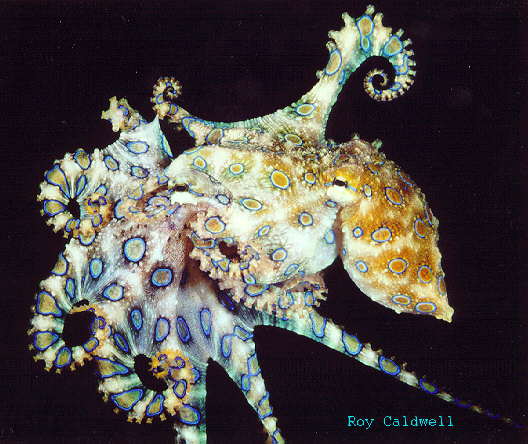Hapalochlaena lunulata, a blue-ringed octopus
<< Cephalopod Species

Two octopuses 'doing the wild thing.' The male is on top and is using his modified third right arm, the hectocotylus, to transfer sperm into the female's mantle.

H. lunulata, one of several species called the blue-ringed octopus, is found in the Indo-West Pacific and Indian Oceans. They lay 60-100 eggs that hatch into planktonic paralarvae. Blue-ringed octopuses are VERY venomous—the iridescent blue rings or lines are thought to be warning coloration (Roper and Hochberg, 1988). It's funny that the most dangerous octopus isn't a gigantic ship sinking creature but a very small and beautiful one. Perhaps someone should tell Hollywood that they have it all wrong....
References and Credits
Credits
The photographs of H. lunulata were shot by Roy Caldwell.
References
Roper, C. F. E. and F. G. Hochberg. 1988. Behavior and systematics of Cephalopods from Lizard Island, Australia, based on color and body patterns. Malacologia. 29(1): 153-193.
|




